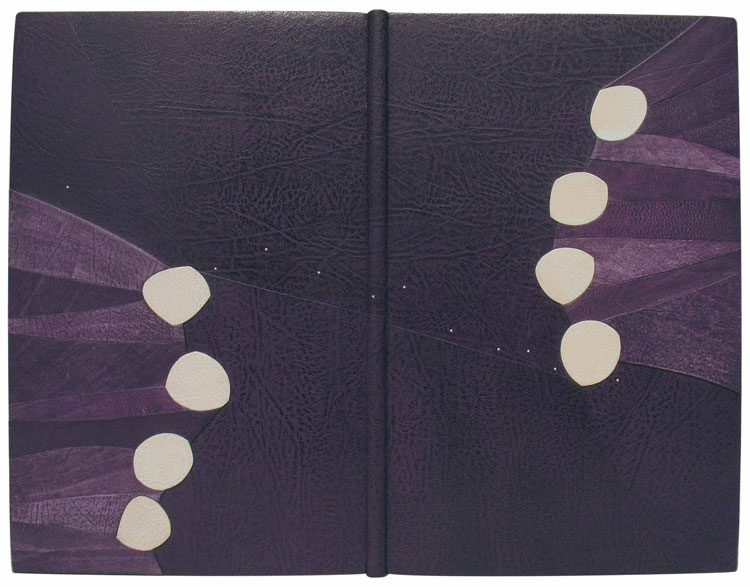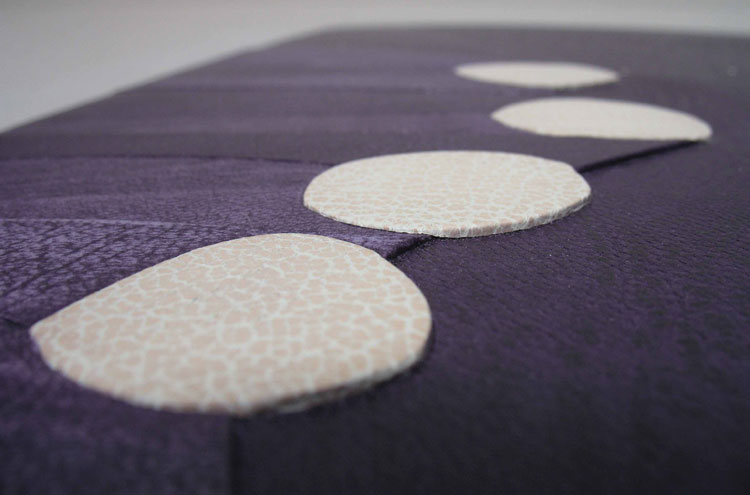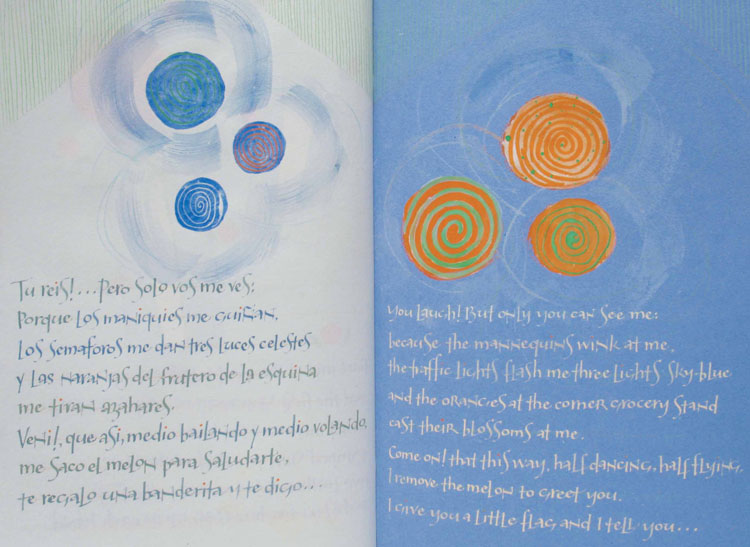Sol Rébora bound this special one of a kind text by calligrapher Nancy Leavitt after a serendipitous meeting. The book is bound in the French-style of fine binding in full violet goatskin. The decoration is divided into six levels with onlays in purple and white goatskin.
The text within this binding is a special edition by Nancy Leavitt. Do have a connection with Nancy, who is a calligrapher and book artist based in Northern Maine?
I met Nancy in New York in 2006, at the 100th Anniversary Guild of Book Workers Conference. I love her work and I like her very much; she is really a beautiful person and a great artist. I proposed to her that we make a book together and she accepted; so we started to work on it. We looked for a topic which we both like to work with and [settled on the subject of] Tango. After some research we chose [the popular song] Balada para un loco [by poet Hector Ferrer].
Sometime later she had finished the book, she sent it to me by mail, and I worked on the binding. Both of us worked totally free on our feelings.
Nancy found a way to make a translation, which is very difficult for Tango. With the text and the song, she found a base to create the book.
Later I bound the book, working with the same process I use for every design binding, but with the plus that I had been part of the creating process of the text in some way. I sent the design to Nancy before I began, (even if she didn’t ask it) and she liked it very much, so I started to work on it.
It was a wonderful experience.
Did you find inspiration in the text or do you draw from another source?
To explain my way to work on a design or to find inspiration I have quite a clear process of work.
As a starting point in the design process, I engaged in the act of reading the text of the book to be bound or I inquire about the context and history of the edition. To continue as a general basis of the process, I found very necessary to observe carefully all the aspects of the book:
– Typography: The design of the typeface, its predominant form, size and color.
– Print Layout: Book cover, typographic case and blank surfaces around the text.
– Paper: Color, texture and paper weight.
– Illustrations: Techniques used for illustrations, predominant color, size and quantity thereof.
– Size and shape of the book: I observe the size of the book, number of booklets [signatures], leaflets or free sheets, and finally the weight of the book.
From the evaluation of these conditions, I can begin to work on the design of the binding:
– Structure and construction process: What may be the most appropriate structure and format and sewing by weight.
– Materials to use: wire, paper, paperboard, leather, fabric, or alternative materials such as acrylic, wood, metal, etc.
– Textures: Choosing textures in every material used for union or for opposition to the qualities that brings the book.
– Colors: Colors of the materials I decide to use.
– Design: Drawings, designs, models, colors and material testing.
I think the openness and the preservation are the most important points on the construction process of a contemporary design binding, together with “good techniques and aesthetic criteria”.
These are technical conditions that a binding should have to preserve the criteria that the book brings from the edition, which is accompanied by an aesthetic thought of form and color text, based on the text, work which is responsible editors, designers and illustrators.
The design and the aesthetics or the artistic expression of the binding should be integrated to create one piece with intellectual and sensory reading from the outside. Finally, I would say the construction techniques of the structure, along with the design of the cover and applied materials, play together to achieve this unit.



